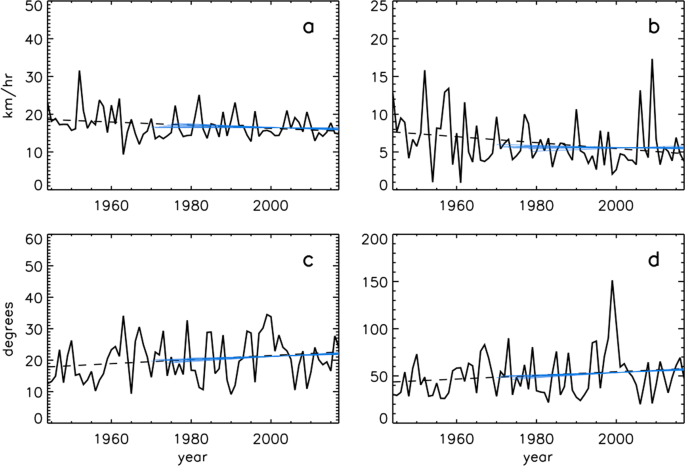1
Weather / Very short duration rainfall is less extreme (mainly statistically flat)
« on: September 26, 2021, 1128 UTC »
After a sabbatical I am back analyzing the weather. This analysis is about short duration rainfalls that cause flash floods. It's a very simple analysis looks at the maximum rainfall for a one hour duration through six hours duration. The trend is the slope of the linear fit for the highest rainfall of the year. I also do the trend for each month, although the monthly trend is interesting for reasons other than flooding. The flash flood is really based on the maximum rain for the year. I try to get 70 years of data, but you will see on some individual stations there can be a lot of missing or junk data even with a reasonable threshold for file size.
There's a consistent pattern which shows up with a few exceptions at individual stations. The pattern is that the longer the duration, the more likely that there's a less negative (or positive) trend in max rainfall. It's most noticeable in October. It's possible that warmer oceans are lingering into that month causing higher extreme rainfalls or perhaps late season hurricane remnants since the upward trends seem to be clustered in the eastern US.
I simply follow the data, but I ask myself why would extreme hourly rainfall be trending down in light of global warming which increases atmospheric moisture in general? My guess, so far, is that the dynamics have changed, perhaps with less severe cold fronts there are less extreme rainfalls.
Results, code and compressed (processed) data: https://followthedata.dev/wx/rfhourly/
There's a consistent pattern which shows up with a few exceptions at individual stations. The pattern is that the longer the duration, the more likely that there's a less negative (or positive) trend in max rainfall. It's most noticeable in October. It's possible that warmer oceans are lingering into that month causing higher extreme rainfalls or perhaps late season hurricane remnants since the upward trends seem to be clustered in the eastern US.
I simply follow the data, but I ask myself why would extreme hourly rainfall be trending down in light of global warming which increases atmospheric moisture in general? My guess, so far, is that the dynamics have changed, perhaps with less severe cold fronts there are less extreme rainfalls.
Results, code and compressed (processed) data: https://followthedata.dev/wx/rfhourly/














